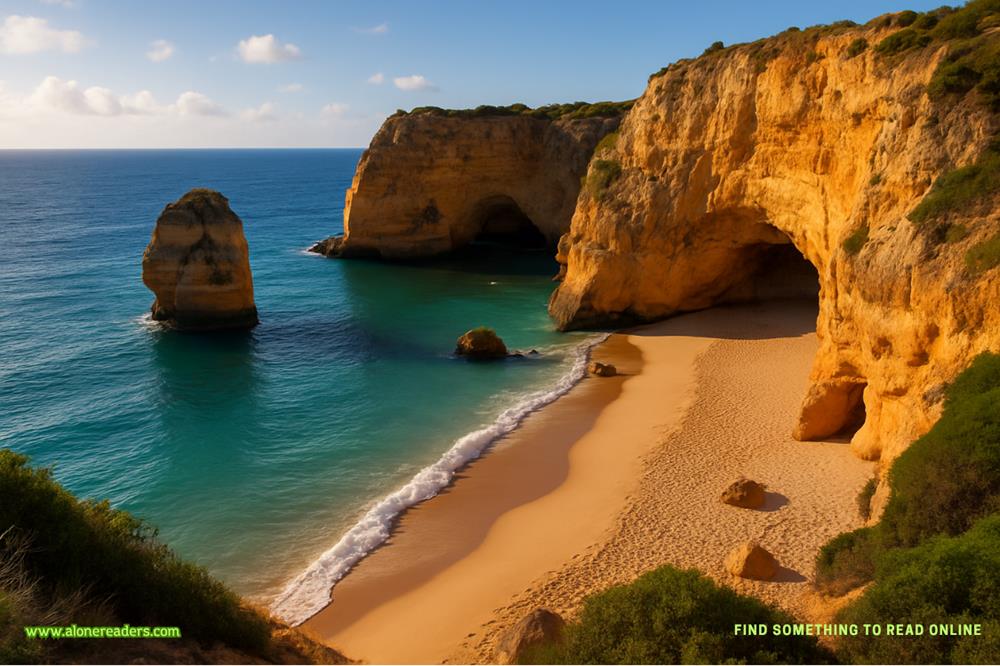Real. The word settled deep inside me, sending out ripples.
Outside, the storm continued its relentless assault on the island, but inside, something was taking root.
Eric eventually dozed off on the couch and curled into the cushions. I threw a wool blanket over him when his breathing deepened, trying not to notice how young he looked in sleep.
The storm was still raging when I retreated to my bedroom, but the intensity had eased. It was less like an assault and more like white noise.
I lay flat on my back, staring at the ceiling, reliving the evening. Eric Callahan. Thomas Callahan's son.
Of all the researchers who could have shown up on my doorstep, it was the son of the man who'd pulled me from that wreckage so long ago and stayed with me while the sirens wailed and my life changed forever.
Somehow, in four days and one storm-drenched evening, Eric had slipped past every defense I'd constructed. He'd looked at my isolation and seen strategy instead of pathology. He'd heard my story and offered recognition instead of pity.
The wind howled through the eaves, rattling the windows in their frames, and I thought about Eric's laugh. When was the last time I'd made someone laugh? When was the last time I'd wanted to?
I shifted my position again, trying to find a comfortable angle for my knee. Everything was on the verge of being different now.
Lying there in the dark, I listened to Eric breathing. I'd constructed a fortress on the island to keep the world out, but somehow, he'd slipped inside. And I wasn't sure I wanted him to leave.
Chapter five
Eric
Mornings were my time to explore. The sun was bright in the aftermath of the storm. I'd been wandering Ironhook for nearly a week, and my feet had developed their own sense of direction—today, they carried me north, away from the coastal path I'd been documenting, toward a section of the island I hadn't yet explored.
I pushed through a tangle of wild roses. I'd focused my research on the resilience of people in the face of economic forces beyond their control, but this morning, I turned things on their heads. I thought about how places held on sometimes, even after the people had moved on.
I spotted something unique through the undergrowth: a strange geometric curve that didn't belong to the natural landscape. It was chain-link fencing, I realized, as I fought my way closer.
It wasn't the practical kind you'd string around a garden. It was industrial-grade, twelve feet high, with concrete-anchored posts. The structure had mattered enough to build it properly.
I followed the fence line through blackberry canes and sumac saplings, pushing aside branches woven through the metal mesh. The vegetation grew thicker as I walked until I was tunneling through green walls that scraped against my camera bag and left burrs clinging to my sleeves.
Suddenly, the brush opened up. I stood at the edge of what had once been a hockey rink.
The surface was fractured asphalt now, split into irregular puzzle pieces by decades of frost heaves. Weeds erupted through every crack—goldenrod, purple asters, and scrappy birch saplings that managed to root themselves in spaces barely wide enough for their seeds.
The boards stood weathered but intact. Goal frames rose from the chaos like rusted monuments, their nets long since rotted away, leaving only skeletons. Orange rust bled down the posts in irregular streaks.
I walked the perimeter slowly, snapping a few Polaroid photos. Someone had carved initials into the boards—JM '89 in careful block letters, SARA + TOMMY 4EVER in a heart now partially obscured by moss, and something more recent in silver spray paint that the weather had rendered illegible.
Beneath a tangle of Virginia creeper, I saw bits of faded red paint. It was the center line, maybe, or the outline of a face-off circle. I crouched down and brushed away some leaf litter, revealing more.
I grinned, feeling like an archaeologist unearthing 20th-century objects.
A hockey puck sat half-buried next to a young birch tree that had sprouted directly through what must have been the blue line. The tree was maybe six feet tall now—old enough to suggest years of abandonment.
Click.My Polaroid spit out another image.
I moved methodically around the rink. Vines had colonized the goal frames. Wildflowers bloomed in the penalty box area.
Standing at what had been center ice, I closed my eyes and tried to imagine the place in its prime. I heard the scrape of skates on fresh ice and the sharp sound of pucks meeting sticks.
I opened my eyes and pulled out my field notebook, balancing it against my knee as I wrote:This wasn't only a rink. It was a gathering place,thekind of space that made winter worth surviving.
The Polaroids finished developing as I walked back toward the cottage, their colors rich and slightly oversaturated. Each was evidence of an image of Ironhook I was only beginning to understand.
I tucked the photos into my jacket pocket, already wondering what Wes would make of them. And whether he'd ever skated on the rink.















